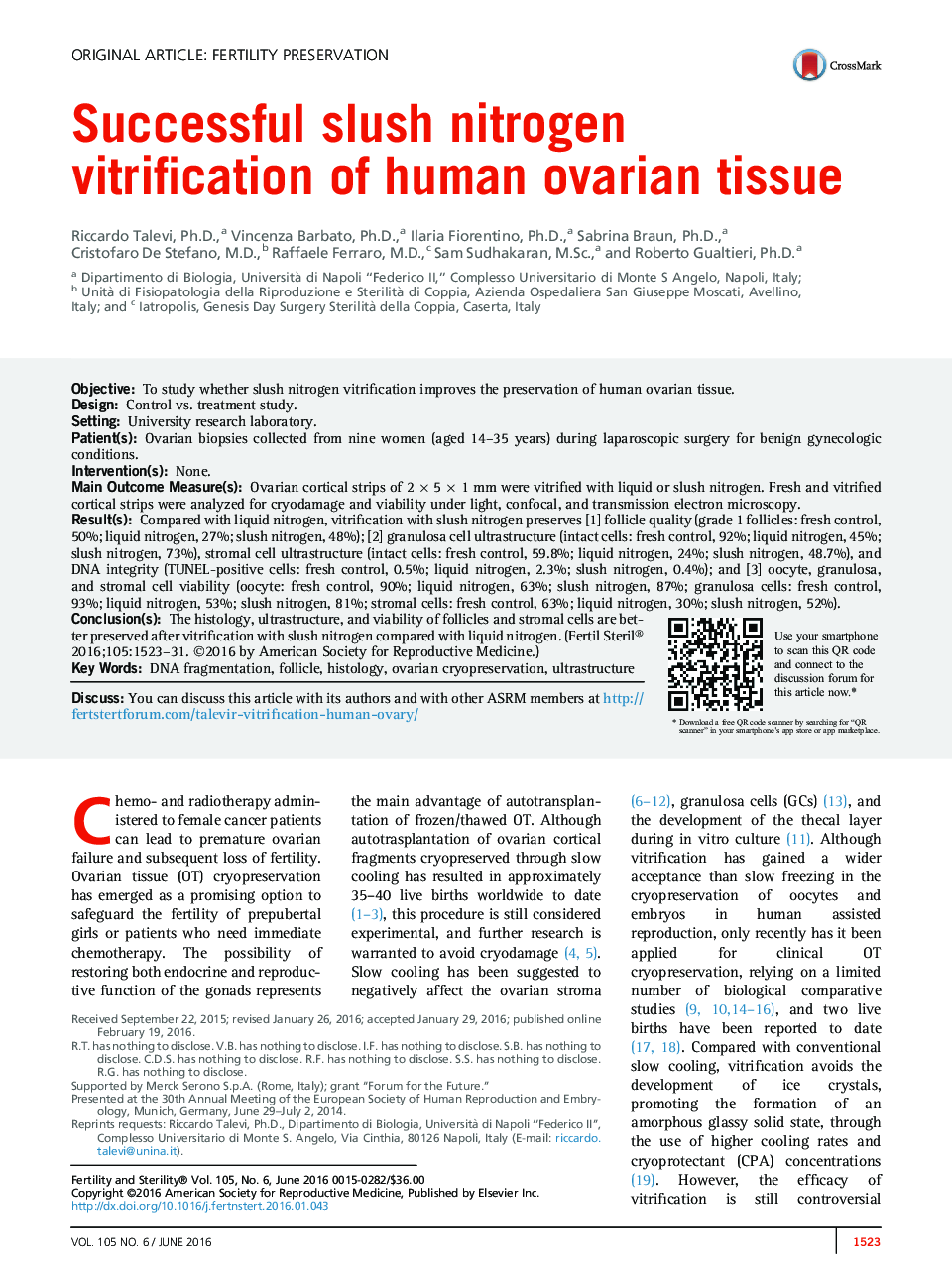| Article ID | Journal | Published Year | Pages | File Type |
|---|---|---|---|---|
| 6179452 | Fertility and Sterility | 2016 | 10 Pages |
ObjectiveTo study whether slush nitrogen vitrification improves the preservation of human ovarian tissue.DesignControl vs. treatment study.SettingUniversity research laboratory.Patient(s)Ovarian biopsies collected from nine women (aged 14-35Â years) during laparoscopic surgery for benign gynecologic conditions.Intervention(s)None.Main Outcome Measure(s)Ovarian cortical strips of 2 Ã 5 Ã 1Â mm were vitrified with liquid or slush nitrogen. Fresh and vitrified cortical strips were analyzed for cryodamage and viability under light, confocal, and transmission electron microscopy.Result(s)Compared with liquid nitrogen, vitrification with slush nitrogen preserves [1] follicle quality (grade 1 follicles: fresh control, 50%; liquid nitrogen, 27%; slush nitrogen, 48%); [2] granulosa cell ultrastructure (intact cells: fresh control, 92%; liquid nitrogen, 45%; slush nitrogen, 73%), stromal cell ultrastructure (intact cells: fresh control, 59.8%; liquid nitrogen, 24%; slush nitrogen, 48.7%), and DNA integrity (TUNEL-positive cells: fresh control, 0.5%; liquid nitrogen, 2.3%; slush nitrogen, 0.4%); and [3] oocyte, granulosa, and stromal cell viability (oocyte: fresh control, 90%; liquid nitrogen, 63%; slush nitrogen, 87%; granulosa cells: fresh control, 93%; liquid nitrogen, 53%; slush nitrogen, 81%; stromal cells: fresh control, 63%; liquid nitrogen, 30%; slush nitrogen, 52%).Conclusion(s)The histology, ultrastructure, and viability of follicles and stromal cells are better preserved after vitrification with slush nitrogen compared with liquid nitrogen.
